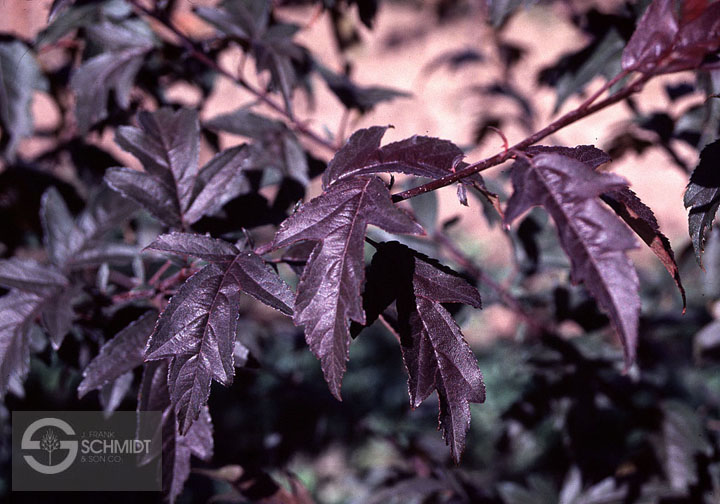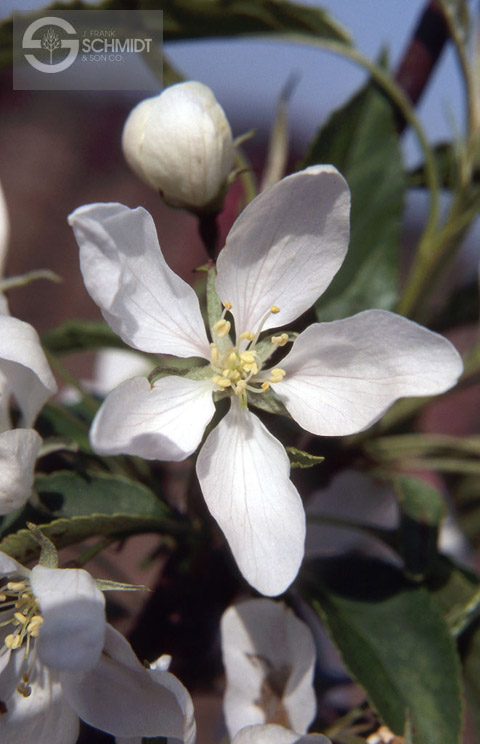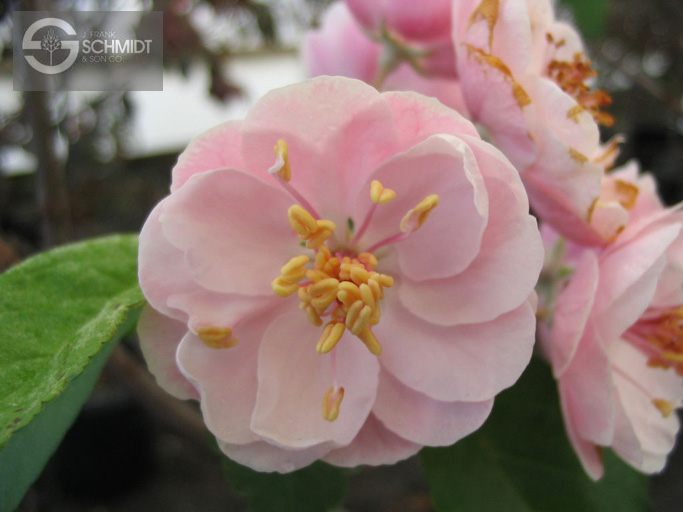| PSC 2620: Woody Trees and Shrub | Course Home | Week 4 |
Malus sp. - Flowering Crabapple
Plant Viewer
Plant Description
Crabapples are one of the most common species of trees used in commercial and residential landscapes because of their hardy nature and beautiful spring blossoms. Because of the vast number of different varieties of Crabapples, it is difficult to generalize about their habit and form. The most consistent features is their spring blossoms, serrated leaves, alternate branching pattern, shiny gray bark at maturity, and production of pome fruits (though several new varieties are fruitless). See the cultivar descriptions below for a more detailed description of the characteristics of each individual cultivar.
Landscape Use
Use as a small flowering accent tree. Any crabapple that drops its fruit should be kept away from major walking thoroughfares because the fallen fruit they will create an unsightly and slippery mess when stepped on.
Points of Interest
Crabapple is especially susceptible to fire blight, which appears to burn the ends of the branches by blackening the wood, fruit and foliage. They can also be susceptible to cedar apple rust, scab and mildew.
Magnolia x soulangiana is susceptible to leaf spot, mildew and scale.
Notable Cultivars
Royal RaindropsIt is has a rounded form reaching 20 feet high and 15 feet wide. Bright magenta single-blossoms in the spring are followed by purple leaves with five lobes, the central three lobes being longer than the outer two. In fall, the leaves turn a bright orange. The fruit is red, 1/4 inch in diameter and persistent. It has exhibited good disease resistance to all of the major crabapple diseases.

Pink Spires
This tree has an upright, oval form - 15 feet high and 10-12 feet wide. The single-blossoms are bright pink, and the elliptic leaves emerge purple in the spring and turn a dark green in the summer. It is very susceptible to fire blight. The deep red fruit is persistent.

Louisa
Bright red buds open into true pink single-blossoms. It has a broad spreading or weeping form, that is especially graceful when the tree is in bloom. The dark green leaves are elliptic and serrated. It will reach a height of 10-15 feet, with the width varying. The fruit is yellow and 3/8 inch wide and is persistent. It has good resistance to all of the major crabapple diseases.

Spring Snow
Spring Snow is a larger crabapple (up to 25 feet high) with a naturally rounded form. The branching is very dense, which means that the blooms are plentiful and especially showy. The single-blossoms are white and fragrant. It is an especially popular crabapple because it is almost entirely fruitless. Unfortunately it is not as resistant to disease, and is especially susceptible to scab and fireblight.

Prairifire
A very popular variety with bright magenta blossoms and purple elliptic foliage in spring. During the summer the foliage slowly fades to green, but retains purple hues on the underside of the leaf. The fruit is 1/2 inch in diameter and persistent. It is one of the most stunning blooming crabapples. Reaches 20 feet high and wide.

ioensis Klahms Bechtel
An old and messy variety of crabapple. The 1 inch diameter fruit is large and drops, creating quite a mess. However, the double blooming pale pink blossoms are spectacular. The blossoms open in a whorl, similar in form to a rose. The foliage is dark green. Reaches 20 feet high with a slightly smaller width.
